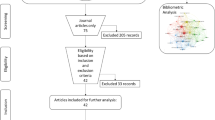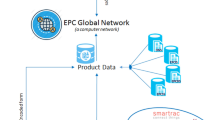Abstract
Recently, the blockchain-as-a-service paradigm arose, and many works have evaluated the performance issues related to it. However, not as much has been done regarding Dependability attributes, which have ever been a crucial topic on service provisioning, let it be either public or private infrastructures. This paper presents the blockchain provisioning planning tool (BPPT), a framework to evaluate the availability, deployment, and maintenance costs of Hyperledger Fabric-based applications over private computational infrastructures. The BPPT uses continuous time markov chain (CTMC) and reliability block diagram (RBD) models as an evaluation method of Hyperledger Fabric’s environments and determines distributed applications’ deployment feasibility and endorsement policies related to the platform. We also present case studies that may help those interested in paradigm changes to decide whether they should migrate from old to new technology. Some of the obtained results pointed-out that the AND endorsement, which requires that all nodes sign the authenticity of a transaction, has the highest deployment and maintenance costs, as well as the lowest availability values due to operational requirements, already an OR endorsement, which needs that at least one available node signs the transaction, provides the best relationship between the evaluated metrics. The KooN endorsement (that requires that K out of N nodes signs a transaction authenticity) is a more general model that supports analyzing midterm configurations, besides the two extreme configurations, that is, to AND and OR arrangements.








Similar content being viewed by others
Notes
Hyperledger Fabric: https://www.hyperledger.org/projects/fabric
Hyperledger: https://www.hyperledger.org/about
Ledger Insights: https://www.ledgerinsights.com/how-to-blockchain-as-a-service-baas/
References
Avizienis A, Laprie J, Randell B, Landwehr C (2004) Basic concepts and taxonomy of dependable and secure computing. IEEE Transactions on Dependable and Secure Computing 1:11–33
Avižienis A, Laprie J, Randell B (2001) of Newcastle upon Tyne. Computing Science, U.: Fundamental Concepts of Dependability. Technical report series. University of Newcastle upon Tyne, Computing Science https://books.google.com.br/books?id=cDkmGwAACAAJ
Dantas J (2013) Modelos para analise de dependabilidade de arquiteturas de computação em nuvem. Master’s thesis, Centro de Informática - Universidade Federal de Pernambuco (Recife, Brasil)
Ekblaw A, Azaria A, Halamka JD, Lippman A (2016) A case study for blockchain in healthcare:”medrec” prototype for electronic health records and medical research data. In: Proceedings of IEEE open & big data conference, vol. 13, p. 13
Garg S, A P, M, T., Trivedi KS (1995) Analysis of software rejuvenation using markov regenerative stochastic petri net. In: Proc. In: Sixth International Symposium on Software Reliability Engineering, (ISSRE’95), pp. 180–187. Paderborn
Hao Y, Li Y, Dong X, Fang L, Chen P (2018) Performance analysis of consensus algorithm in private blockchain. In: 2018 IEEE Intelligent Vehicles Symposium (IV), pp. 280–285. IEEE
Hyperledger: An introduction to hyperledger. Tech. rep. (2018)
Hyperledger: Introduction to hyperledger business blockchain design philosophy and consensus. Tech. rep. (2018)
Jain R (1991) The Art of Computer Systems Performance Analysis: Techniques for Experimental Design, Measurement, Simulation, and Modeling. Wiley Computer Publishing, John Wiley & Sons Inc, New York
Kumar MV, Iyengar NCSN, Goar V Employing blockchain in rice supply chain management. In: Advances in Information Communication Technology and Computing, pp. 451–461. Springer
Kuo W, Zuo M (2003) Optimal Reliability Modeling: Principles and Applications. Wiley . https://books.google.com.br/books?id=vdZ4Bm-LnHMC
Maciel P, Lins R, Cunha P (1996) Uma Introducao as Redes de Petri e Aplicacoes. Sociedade Brasileira de Computacao
Maciel P, Matos R, Silva B, Figueiredo J, Oliveira D, Fé I, Maciel R, Dantas J (2017) Mercury: Performance and dependability evaluation of systems with exponential, expolynomial, and general distributions. In: 2017 IEEE 22nd Pacific Rim International Symposium on Dependable Computing (PRDC), pp. 50–57 . https://doi.org/10.1109/PRDC.2017.16
Maciel P, Trivedi K, Matias R, Kim D (2011) Dependability modeling. In: Performance and Dependability in Service Computing: Concepts, Techniques and Research Directions
Malhotra M, Trivedi K (1994) Power-hierarchy of dependability-model types. Reliability, IEEE Transactions on 43(3):493–502. https://doi.org/10.1109/24.326452
Matos R, Araujo J, Oliveira D, Maciel P, Trivedi K (2015) Sensitivity analysis of a hierarchical model of mobile cloud computing. Simulation Modelling Practice and Theory 50:151–164 https://doi.org/10.1016/j.simpat.2014.04.003. http://www.sciencedirect.com/science/article/pii/S1569190X14000616. Special Issue on Resource Management in Mobile Clouds
Melo C, Dantas J, Araujo J, Maciel P (2016)Availability models for synchronization server infrastructure. In: Proceedings of the IEEE Int. Conf. on Systems, Man, and Cybernetics (SMC’16). Budapest, Hungary
Melo C, Dantas J, Maciel R, Pereira P, Quesado E, Maciel P (2019) Blockchain provisioning over private cloud computing environments: Availability modeling and cost requirements. In: 2019 IEEE 8th International Conference on Cloud Networking (CloudNet), pp. 1–3. IEEE
Melo C, Dantas J, Maciel R, Silva P, Maciel P (2019) Models to evaluate service provisioning over cloud computing environments-a blockchain-as-a-service case study. Revista de Informática Teórica e Aplicada 26(3):65–74
Öhmann D, Simsek M, Fettweis GP (2014) Achieving high availability in wireless networks by an optimal number of rayleigh-fading links. In: 2014 IEEE Globecom Workshops (GC Wkshps), pp. 1402–1407. IEEE
Pongnumkul Sea (2017) Performance analysis of private blockchain platforms in varying workloads. In: 2017 26th International Conference on Computer Communication and Networks (ICCCN), pp. 1–6. IEEE
Roy GGR, Kumar SBR A security framework for a sustainable smart ecosystem using permissioned blockchain: Performance evaluation
Sebastio S, Ghosh R, Mukherjee T (2018) An availability analysis approach for deployment configurations of containers. IEEE Transactions on Services Computing
Sukhwani H, Martíne JM, Chang X, Trivedi KS, Rindos A (2017) Performance modeling of pbft consensus process for permissioned blockchain network (hyperledger fabric). In: 2017 IEEE 36th Symposium on Reliable Distributed Systems (SRDS), pp. 253–255. IEEE
Sukhwani H, Wang N, Trivedi KS, Rindos A (2018) Performance modeling of hyperledger fabric (permissioned blockchain network). In: 2018 IEEE 17th International Symposium on Network Computing and Applications (NCA), pp. 1–8. IEEE
Sun Y, Zhang L, Feng G, Yang B, Cao B, Imran MA (2019) Blockchain-enabled wireless internet of things: Performance analysis and optimal communication node deployment. IEEE Internet of Things Journal 6(3):5791–5802
Thakkar P, Nathan S, Viswanathan B (2018) Performance benchmarking and optimizing hyperledger fabric blockchain platform. In: 2018 IEEE 26th International Symposium on Modeling, Analysis, and Simulation of Computer and Telecommunication Systems (MASCOTS), pp. 264–276. IEEE
Trivedi KS, Hunter S, Garg S, Fricks R (1996) Reliability analysis techniques explored through a communication network example
Weisstein EW, et al (2004) Mathworld–a wolfram web resource
Acknowledgements
The authors would like to thank the Brazilian Government for the financial support through the Fundação de Amparo a Ciência e Tecnologia de Pernambuco (FACEPE), the Modeling of Distributed and Concurrent Systems (MoDCS) group for the help on improving this research.
Author information
Authors and Affiliations
Corresponding author
Ethics declarations
Conflict of interest
The authors declare that they have no conflict of interest.
Additional information
Publisher's Note
Springer Nature remains neutral with regard to jurisdictional claims in published maps and institutional affiliations.
Rights and permissions
About this article
Cite this article
Melo, C., Araujo, J., Dantas, J. et al. A model-based approach for planning blockchain service provisioning. Computing 104, 315–337 (2022). https://doi.org/10.1007/s00607-021-00956-4
Received:
Accepted:
Published:
Issue Date:
DOI: https://doi.org/10.1007/s00607-021-00956-4




